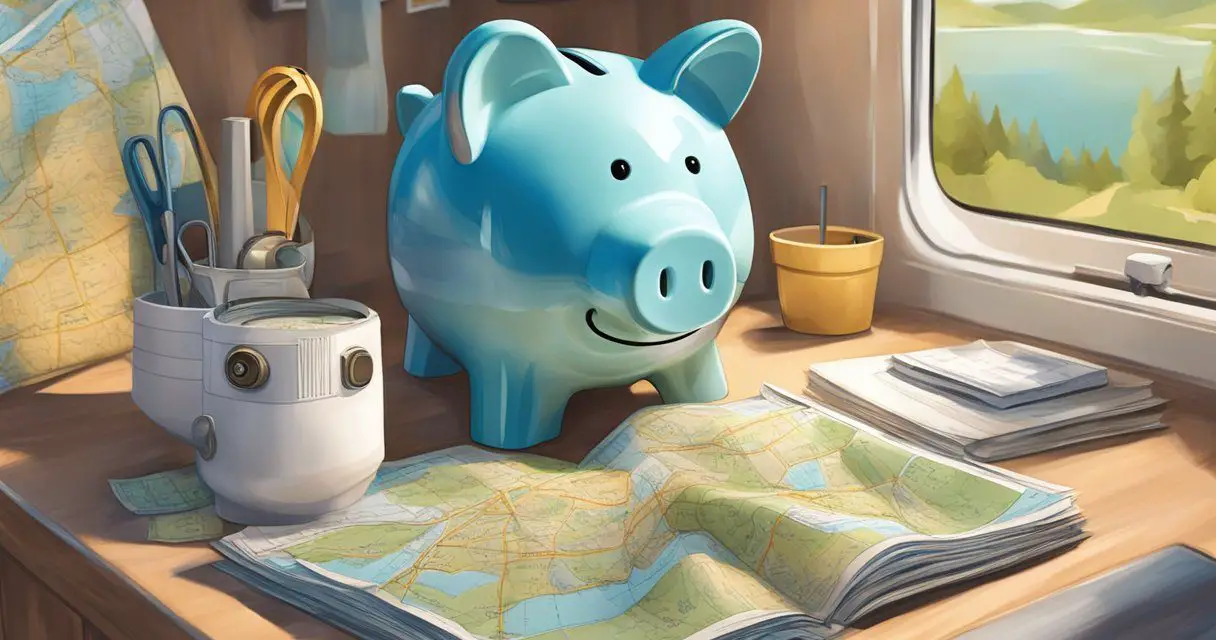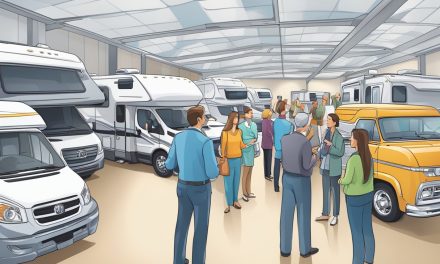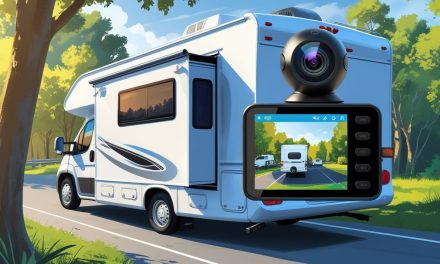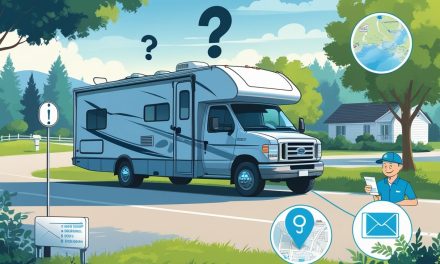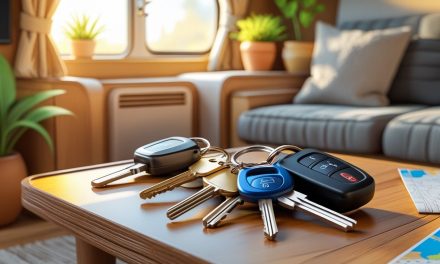Would you like to save this article?
Living the RV life can often feel like a perpetual vacation, and that’s one of the many reasons why so many people are drawn to it. However, it’s important to remember that this is still real life, and managing your finances wisely is crucial to sustaining this lifestyle.
From park fees to fuel costs, the expenses can add up quickly if you’re not careful.
Luckily, we found a great video from the YouTube channel “Making My Abode on the Road” that offers invaluable tips on how to save money while living full-time in an RV.
Are you doing these 10 things?
1. Save on RV Parks
One of the biggest expenses for full-time RVers is the cost of staying at RV parks. According to Leanne from “Making My Abode on the Road,” the best way to save money on RV parks is to boondock on BLM land because it’s free. “There might be some added expenses with dumping water and black tank and getting water and maybe some fuel for a generator,” she says.
Another great option is to stay at county and state parks, which are generally much cheaper. For example, Leanne mentions staying at a county park in California for $55 a night, compared to $100 to $150 at a regular RV park.
“The parks are really nice, with well-taken-care-of grass, nice little trails, and playgrounds,” she adds. Planning ahead can also help you find the best deals and avoid expensive last-minute bookings.
Funny enough, if you just show up without planning, you might end up paying more for a spot than you did for your entire RV!
2. Cook at Home
Food is another major expense for RVers, but cooking at home can save you a lot of money. Leanne humorously points out that while cooking at home can feel boring, it can also be fun if you make it special. “Pour yourself a drink, get some fresh seafood if you’re near the ocean, and make it a special meal,” she suggests.
She even shares a recipe for a delicious breakfast she made with tomatoes, pesto, and goat cheese. “Try cooking some of your favorite foods; we love Mexican food and often make fajitas,” she says. Just imagine the money you’ll save by not eating out all the time—and the bonus is, you won’t have to tip yourself!
3. Use Fuel Points and Discounts
Fuel costs can quickly add up, but there are ways to save. Leanne mentions using fuel points from grocery stores like Kroger or Safeway to get discounts at the pump. “We saved $110 at a Loves station just before we got into California by using our fuel points,” she says. Another tip is to drive slower to improve fuel efficiency.
“We keep our speed at 60 mph and never go over that,” she advises. It’s funny how driving slower not only saves you money but also gives you more time to enjoy the scenery—just make sure you don’t become a rolling roadblock!
4. Fix Things Yourself
Maintaining an RV can be costly if you rely on professionals for every little repair. Leanne recommends learning to fix things yourself to save money. “I’m not that handy, but my husband can fix anything, and that really helps save money big time,” she says.
Whether it’s a leaky faucet or a broken cabinet, doing the repairs yourself can save you a lot of money in the long run. Plus, you’ll get the added satisfaction of knowing you did it yourself—just try not to break more things in the process!
5. Use Reusables
Switching to reusable items can save you money and reduce waste. Leanne mentions using reusable napkins, zip bags, and beeswax wrap instead of their disposable counterparts. “We even use stainless steel coffee filters to avoid buying paper filters,” she says. While the initial investment in reusable items may be higher, the long-term savings are worth it.
Plus, you’ll feel like an eco-friendly superhero every time you use them—just make sure you don’t turn into Captain Clutter with all those reusable items!
6. Stay Longer for Discounts
One often overlooked way to save money is by staying longer at RV parks. “Staying longer is another great way to save money; you get a discount for staying for a week, and some places offer a monthly discount,” Leanne explains. I
n fact, she shares an example where they booked an entire month and only stayed two weeks because it was actually cheaper than paying for the two weeks separately. So, if you find a place you love, why not stick around a bit longer and save some cash?
Plus, you get to become a temporary local—just don’t start forwarding your mail there!
7. Use RV Memberships Wisely
RV memberships can offer significant savings, but it’s essential to choose wisely. “There are a lot of options out there for RV memberships that claim to save you money, but just be careful with those,” Leanne warns.
She recommends doing thorough research to ensure the membership will benefit you. “We have a basic Good Sam membership that saves us 10% on nightly stays across the country,” she says. Additionally, they use the Thousand Trails camping pass, which paid for itself within the first few weeks. “The other tiers seem like a timeshare, which we’re not into,” she adds.
Just make sure your membership doesn’t come with a secret handshake or initiation ritual!
8. Plan Your Meals
Meal planning is an essential hack for saving money on groceries. “If you don’t plan your meals, you end up buying random groceries and might not have anything to put together one meal,” Leanne points out.
By planning your meals, you can make a detailed grocery list and avoid impulse buys. “Failure to plan is a plan to fail,” she adds humorously. Plus, you’ll avoid those awkward moments when you realize you have 10 cans of beans but no tortillas.
9. Take Advantage of Restaurant Specials
Eating out can be a fun part of the RV lifestyle, especially when exploring new places. To save money, Leanne suggests taking advantage of restaurant specials. “Every restaurant has a special, whether it’s happy hour deals or kids eat free nights,” she says. Additionally, using coupon and rebate apps like Groupon and Upside can offer significant savings. “We use Upside for fuel mostly, but they also have deals at grocery stores and local restaurants,” she explains.
So, go ahead and treat yourself—just make sure it’s on special!
10. Drive Slower
Last but not least, driving slower can significantly improve your fuel efficiency. “We keep our speed at 60 mph and never go over that,” Leanne advises.
While it might take you a bit longer to reach your destination, the savings on fuel can be substantial. “Some people say they go 65, but they’re always passing us, so I think that’s a lie,” she jokes. Remember, slow and steady wins the race—or at least saves you a few bucks on gas!

